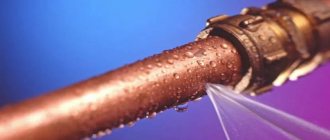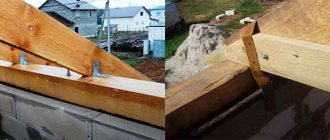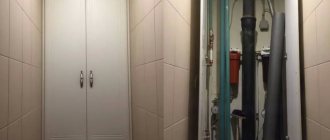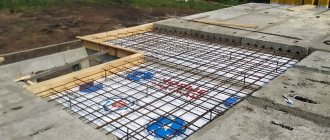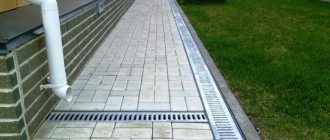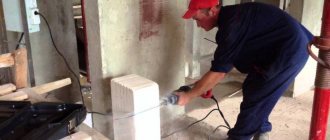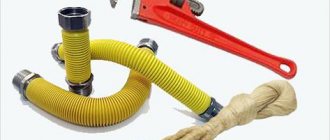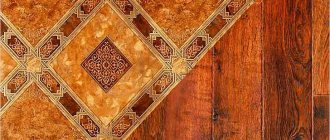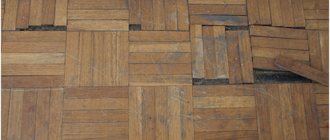When installing a new sewer system or replacing old pipes, you should know how to cut threads on a pipe, as this will simplify the selection of the necessary plumbing fixtures and the pipes themselves. Let's get acquainted with the types of thread, for what purpose it is needed, the main ways in which its size can be determined, and also what tool can be used to make it. We will also consider the process of slicing manually or using automatic devices.
Threaded pipe Source static.tildacdn.com
How to cut threads on a pipe at home
Today, the majority of homeowners, when carrying out repair work in a house or apartment, prefer to use polypropylene for heating and plumbing, or, in extreme cases, plastic.
But the water supply from the outside (especially for apartments in multi-storey buildings) is still done with metal, therefore, the question arises of how to cut a thread on a pipe near the wall. Whatever you say, it is quite difficult to do this due to limitations in free space, so we will draw your attention to some of the nuances of such production, and will also demonstrate a video in this article.
Pipe threading kit for the DIYer
Main reasons for marriage
It should be remembered that when cutting threads, defects may result.
The causes of its occurrence are classified as:
- Lubricating the thread cutting area during operation
discrepancy between the diameters of holes or rods and the thread being cut;
- using a low-quality tool (blunted, incorrectly centered);
- thread cutting without the use of lubricant;
- lack of professional skills.
Advice!
When cutting threads, be sure to lubricate the pipe with either machine oil or a special threading fluid.
This way, you will greatly simplify your work and achieve quality.
Conclusions: the best solution to the problem of installing shut-off valves on pipes for heating and water supply is to manufacture a high-quality threaded connection. To obtain it, you must purchase a pipe threading set, which greatly facilitates the work.
Did you like the article? Subscribe to our Yandex.Zen channel
Threading techniques
Manual thread cutting
The technique for cutting threads on pipe blanks involves the use of the following techniques:
- the use of specialized thread combs and cutters;
- rolling threads using round (flat) dies;
- preparing a threaded connection using “traditional” taps and dies;
- thread cutting using specialized cutters.
Likewise, preparing threaded connections at home is only possible if specific devices and tools exist. In the publication recommended for you, we will look in detail at the method of cutting threads using a special thread-cutting kit (as they also say “kluppa”).
Cutting with an electric clamp
In addition to hand tools, electric tools have also become widespread. The advantage of this design option is high performance. The work when using it has the following features:
- The part to be processed is carefully prepared.
- Ensures reliable fastening of the workpiece.
- The mechanism is attached at the starting point.
- The free movement of the guides and the direction of rotation of the cutting part are checked.
- The first turns are cut in the jog mode.
On the tool you can set basic parameters, for example, the length of the cut. Application features depend on its functionality and other performance characteristics.
Step-by-step instructions for cutting threads using a die
A die for cutting threads on pipes looks like a nut made of hardened steel, inside of which there is a flower-shaped hole, the edges closest to the center are covered with sharp cutting surfaces, and “petals” allow the chips to be easily discharged without interfering with the work.
Working with the tool is not difficult:
- Firmly install the pipe vertically. It must also be prepared - cleaned of paint, chamfers, etc. The ratchet handle for cutting pipe threads holds a tool of the appropriate size, and you apply lubricant to the pipe.
- Place the die strictly perpendicular to the pipe. If there is a deviation of at least 5-10 degrees, then the pipe will already be damaged.
- Start moving the holder handle clockwise.
- When the required space is covered with threads, lift the cutter up and go down again over what has already been cut so that the grooves are clearer.
This video is a demonstration of the correct use of the die. Visual actions follow after the preparatory steps listed above:
General information
The tip of the cutter, when moving at a constant feed speed along the rotating workpiece, cuts into, leaving a helical line on its surface (Fig. 4.42).
The inclination of the helix to the plane perpendicular to the axis of rotation of the workpiece depends on the rotation speed of the spindle with the workpiece and the feed of the cutter and is called the angle μ of the helix (Fig. 4.43). The distance between the helical lines, measured along the axis of the workpiece, is called the pitch P of the helical line. If a segment on the surface of a part equal to the pitch of the helix is turned onto a plane, then from the right triangle ABC we can determine
tgμ= P/(πd),
where d is the diameter of the workpiece along the outer surface of the thread.
When the cutter is deepened into the surface of the workpiece along the helical line, a helical surface is formed, the shape of which corresponds to the shape of the tip of the cutter. A thread is a helical surface formed on rotating bodies and used to connect, seal or ensure specified movements of machine parts and mechanisms. Threads are divided into cylindrical and conical.
Depending on the purpose of the threaded connection, threads of various profiles are used.
The thread profile is the contour of the thread section in a plane passing through its axis. Threads with acute-angled, trapezoidal and rectangular profiles are widely used.
Threads are left and right. A screw with a right-hand thread is turned clockwise (from left to right), and a screw with a left-hand thread is turned counterclockwise (from right to left). There are single-start and multi-start threads. A single-start thread is formed by one continuous thread, and a multi-start thread is formed by several threads equidistantly located on the surface of the part. The number of threads is easy to determine at the end of the part, where the threaded surface begins (Fig. 4.44, a and b).
There are strokes Ph and pitch P of multi-start threads. The stroke of a multi-start thread (GOST 11708-82) is the distance along a line parallel to the thread axis between any initial midpoint on the side of the thread and the midpoint obtained by moving the initial midpoint along a helical line at an angle of 360° between the same points of one turn one thread of thread, measured parallel to the axis of the part. The stroke of a multi-start thread is equal to the thread pitch multiplied by the number of starts:
Ph= kP,
where k is the number of visits.
DIY thread cutting equipment
On pipes for small volumes of work, external threads can be cut with your own hands using pipe clamps, using fixed or sliding dies.
Initially, the pipe is clamped into a clamp, the end of the pipe is cleaned of scale using a file, after which the cut part is lubricated with sulforesol or drying oil.
A special tool is installed on the pipe - a clamp, which has sliding dies, and by gently hitting the handle of the faceplate with a hammer or mallet, the guide dies are brought close to the pipe, then everything is secured with bolts. In addition, based on the risk of the faceplate, cutting dies are installed. Then they begin to rotate the tool clockwise, while simultaneously pressing on it.
In the pipe clamp body, on one side there are four holes for the dilution die, and on the other side there are three holes for the guide die. The cutting guide dies are moved apart, and the faceplates are brought together, which are attached to the body with clamping rings. In the planes adjacent to the body, the faceplates have spiral grooves into which the die pins fit. If you turn the faceplate, the pins begin to slide along the spiral grooves, and the dies come closer together (if you turn the faceplate to the left) or gradually diverge (if you turn the faceplate to the right). At a time when the dies are already mounted in the required position, the faceplate is secured using clamping bolts.
Pipe dies are manufactured with a pair of sets of cutting dies: for cutting threads on pipes measuring 20 or 15 millimeters and for cutting pipes with a diameter of 25, 38, 32 and 50 millimeters.
For pipe clamps, radial double-sided or radial single-sided dies are used. Dies are produced in 4 copies per package. Each has a designation with a size and a serial number from one to four. The corresponding numbers are located at each slot on the body of the clamp. The pipe has replaceable bushings for different pipe diameters, located in the guide flange and secured with screws. The latter is secured with screws to the body, where the corresponding die numbers are installed.
Pipe clamps have the advantage of the highest quality of threads obtained on products and structural strength. The disadvantage of this equipment is its large mass and the need for serious maintenance.
When cutting a 50 mm thread, it is necessary to rearrange the guide strips, turning them 180 degrees, then with the short side inside the die.
Plumbing Repair Basics
Not many people have thought about how to connect the water supply to a private house.
It consists of:
- pipes,
- valves,
- valves
- taps and other components.
All this is assembled into a single system using threaded connections.
To ensure that the process of replacing an old part with a new one does not take much time, there is a thread.
Sometimes you have to deal with cases when you yourself have to change a worn-out element (for example, a pipe), but there are no grooves on it.
What to do in this case?
The way out of this situation is very simple - cut the thread with your own hands. The ideal option is when you have the opportunity to use a lathe.
But not every home craftsman has such equipment.
It is expensive, and in order to use it you need to have certain experience and skills.
If you need to equip a pipe with threads, for example, to connect a membrane tank for water supply (written here), you can use one of two types of devices designed for cutting grooves:
- thread-cutting tray,
- pipe wrench
This tool is used to cut threads in water and sewer pipes (read why a water seal is needed here), which are used in the utility networks of multi-storey buildings and private buildings.
Note! If you do not have any experience in this matter, then working with a lecher will be very difficult for you. Since even the slightest misalignment of the tool will invariably lead to the formation of a defect
In this case, it is best to use a wrench; the cutting process with its help is simplified by the presence in the design of such an important part as a guide. In order not to spoil the water pipe, to acquire a certain skill, practice on an unnecessary piece of a hollow object
In order not to spoil the water pipe, to acquire a certain skill, practice on an unnecessary piece of a hollow object.
Now let's try to refresh our memory about what the thread cutting process is:
- when grooves are applied to pipes, a helical surface is formed on the outside of the hollow object;
- the helical plane plays the role of a connecting element, which rotates steadily around the axis of the fitting;
- The thread pitch corresponds to one full turn.
In order for the junction of water pipes to be waterproof, durable, and the unit to withstand high pressure in the system, it is necessary to cut the threads so that the pitch exactly matches the pitch of the joining parts.
Existing threading options
Pipe threads are divided into five types, but the most popular options are conical and cylindrical. Household members often encounter such types of pipe threads. There are two methods for threading a water pipe:
- Automatic, which involves cutting threads on water supply pipes using special machines and power tools.
- Manual. For this, special hand tools are used.
If, as part of his job, a person needs to cut threads on a large number of pipes, then it is appropriate to purchase a special power tool, which will facilitate manual labor.
When the need to obtain a threaded connection is an isolated case, then manual technology is suitable for such purposes. On water pipelines, as well as pipes of heating systems, thread cutting is performed using a die.
A die (another name for a die) is the simplest device intended for cutting external threaded connections on pipes.
The die is a steel disk, and its inner diameter has axial holes in different numbers, which depends on the size of the product. The edges of these holes form cutters, with the help of which thread cutting is performed. To ensure the reliability of such a tool, it is made of alloy steel or hard alloys.
Dies can have different shapes (round, square, hexagonal or prismatic), but most often disc options are used. Disc dies are intended for making threaded connections on water pipes. To make it convenient to work with the die, they are equipped with additional knobs, as well as clamps in the form of screws. Dies are also solid, split and sliding.
Types and properties of cutters
A metal turning tool consists of a holder and a working head. The quality of parts processing directly depends on these elements. The holder has a rectangular or square cross-section. With its help, the cutter is fixed on the lathe.
The working head is used to process parts. It is composed of various cutting planes and edges. The sharpening angle of the head is determined by the material from which the part is made.
External and internal threads are cut using different types of thread cutting tools.
The most used ones:
- rod;
- prismatic;
- round.
Rod cutters consist of a rod with a working head. These types come in different profiles. The most wear-resistant are cutters to which carbide working edges are soldered. They do not need frequent sharpening as they remain sharp for a long time.
Prismatic cutters are used to process only the outer side of the blank. Their advantage over rod ones is their ability to process large surfaces. But they should be sharpened more often.
Round cutters are used in the process of cutting internal and external threads. These tools are very easy to use and their scope of use is quite wide. Round cutters allow repeated sharpening.
Based on their design differences, metal-cutting tools are divided into several types:
- straight;
- curved;
- bent;
- drawn out.
The top of any threading tool is a rounded head or chamfer. The thread profile is formed by a cutter of the proper configuration. Using curved cutting tools, the threaded thread is cut on the surface of the blank.
Straight incisors are rarely used here. The carving inside the part is made with curved cutters, sometimes straight, fixed in a special holder.
Cutters are divided into categories:
- made of high-speed alloy steel;
- with carbide plates soldered onto the working element;
- cutting devices with replaceable multifaceted inserts mounted on the head.
According to the direction of the screw thread, the tools are differentiated into right-handed and left-handed. When working first, the feed goes from left to right, when working second, the feed goes to the left. The right ones use it more often.
Cutting the thread with a die
Thread cutting
Tools
Explanation. A thread-cutting tool for pipes and fittings in the form of a thick plate with a threaded hole in the center is called a thread-cutting tool. Where there are slots to form cutting edges. A die, unlike a die, is a one-piece tool, therefore, the carving is more accurate, especially on blanks with a small cross-section. It can be for cutting left-handed or right-handed threads, but there is also a universal option - marked LN.
Clutch with ratchet
- As you understand, the main device used for cutting threads on pipes is a lever, but by itself it is not effective, since it requires a lever to activate it . You can immediately make a reservation that the lever must be specialized, for example, if you clamp it with a gas wrench and try to cut the thread, the lever will most likely burst.
- The cutting tool is fixed in a clamp - this is a frame with handles - so, the frame compresses a prismatic or square blade, increasing its strength, and the handles, screwed on the sides, serve as a lever . But such a device is convenient in cases where there is room for levers, but if the blank is located against the wall, then they have to be constantly unscrewed and tightened again. Therefore, here it is much more convenient to use a pipe clamp with a ratchet, as in the photo above - the presence of a wall on one or even both sides (corner) in this case will not be a serious obstacle.
Electric thread cutting die SQ30-28
- An electric clamp or machine for cutting threads on pipes is also a hand tool that can be used in any plane, moreover, the head can be inserted from any side, therefore, both sides are working . Thanks to the powerful gearbox, you will hardly have to exert any effort when cutting threads, but its price, accordingly, is also much higher than the same ratchet. Despite its versatility, such a tool, compared to a lever die, is quite bulky and requires operational space for cutting threads on a blank.
Practical advice
First of all, the instructions require cutting the pipe evenly, since otherwise the thread will move diagonally, therefore, the thread will be unclear, with a broken pitch, or you will not be able to catch the edge at all.
Here, especially if the blank is located against the wall, no markings will help you - for an even cut you need to develop an accurate eye. Even if you didn’t succeed in making an even cut the first time, you can always use the same disk to trim the higher edge so that you get an angle of 90⁰ with respect to the pipe wall.
It is very important to pay attention to the condition of the metal - given that such work is usually carried out with old plumbing or heating, the walls can be corroded, and cut threads will make them even thinner. Therefore, you should either get to the “living metal,” as craftsmen usually call it, or even replace the old pipe with a new one.
On an even cut, you need to remove the chamfer, which will allow the blade to “catch” on the metal, just try to ensure that the bevel is uniform around the entire circumference - this way the head will screw on evenly.
Recommendation. To cut a thread, it is imperative to lubricate the working blank so that the edge does not become “torn.” For this, machine oils and grease are used, but practice shows that the best lubricant in such cases is raw lard, which is rubbed onto the surface being treated.
We use a clamp with a ratchet
Origin and appearance
Cichlazoma severum belongs to the cichlid family and originates from the waters of South America. The first mention of them is found in the records of the Australian Johann Natterer, who discovered unusual fish living in the Amazon River basin.
But you can also find severum in other bodies of water. Brazil, Guiana, Colombia, Venezuela, and the upper reaches of the Rio Negro are the main habitats of cichlases.
Upon visual comparison, the differences between severus and discus become obvious. In the photo on the left is Cichlazoma severum, on the right is Discus.
The appearance of Heros severus resembles members of the discus family (Discus Cichlid). Because of this, it is often called the “false discus.” However, true discus are much larger than severums.
Severum lives up to its name, translated from Latin meaning stern, reserved. This is expressed both in the appearance of the fish and in their temperament.
The round body of cichlids, flattened on both sides, is colored grayish-green with brown splashes. Thanks to their laterally flattened body, the fish easily maneuver in the water, avoiding dense vegetation and fallen tree branches.
DIY thread cutting on a metal pipe
When installing metal pipes for water supply or heating, they have to be threaded. The threaded connection of pipes is quite reliable and can withstand significant pressure (if done correctly), so let's look at how to cut threads on metal. pipe with your own hands.
First of all, we cut off the required section using a grinder or a hacksaw, making sure to control the evenness of the cut so that one part of the pipe is not larger than the other - the cut must be perpendicular to the walls of the pipe.
The pipe must be cleaned of rust, old paint, etc., if there is anything on it. Next, we cut a chamfer from the pipe (internal or external, depending on what thread you are cutting) for easier movement of the cutting tool. The chamfer can be cut with a grinder with a metal disc (→ how to work with a grinder) or with a flap disk or file.
Beveled metal pipes
Cutting external threads on a pipe using a die (die)
Everything is the same as with the rods described above, but now with a larger diameter, which most likely will require some practice and you should practice or be extremely careful the first time. Also, to obtain high-quality threads and subsequent good pipe connections, you need to work first with a rough die, then with a finishing die (such kits are sold).
The choice of die metal is also important. To work with hard alloys, you should use the appropriate dies made of certain alloys; please check this when purchasing.
But, a die is not such a good and powerful tool for cutting threads on pipes with your own hands; it is much more convenient to use clamps.
The die holder is practically the same die holder, only with a guide for smooth movement and thread cutting. The clamp is placed on the pipe of this particular guide.
We put on and attach the clamp to the pipe, screwing it in a little by hand, then you need to use either a special tool - a ratchet, which is convenient for twisting the clamp, but for household needs a large adjustable wrench or gas wrench is also suitable.
One part of the pipe must, of course, be fixed in a vice. If the pipe is cut locally, then make sure that it is not torn out somewhere due to the force applied to the clamp. The pipe can be fixed using a second gas wrench, but it is better for a second person to do this, because cutting threads with one hand is problematic.
What is a clamp and how to use it (video)
Will need
- Clamp for the required pipe diameter.
- Adjustable wrench (gas).
Klupp is a thread-cutting tool, like a die, only it is an attachment with a guide skirt. It must be purchased from a plumbing store. There is no shortage of them, so you can find them without problems, even in the village.
In this case, the Chinese version is presented, which is quite good.
Such a thing costs around 200-500 rubles. It all depends on the diameter and markup. Running models with diameters of 1/2, 3/4 inches and inch, as in my version.
You can ask plumbers for a Soviet equivalent, if possible. Then it will be completely free for you.
